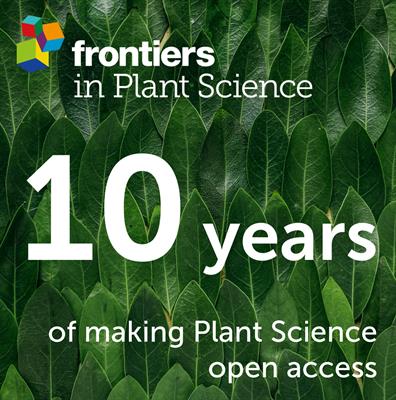How forage grain ratoon rice improves the grain yield during the ratoon season
IF 4.1
2区 生物学
Q1 PLANT SCIENCES
引用次数: 0
Abstract
IntroductionIn recent years, with the rapid expansion of ratoon rice production in Hunan, a unique ratoon rice-based production system, forage-grain ratoon rice (FG-RR), has been newly developed. Ratooning rice is a season of rice harvested by utilizing the dormant buds on the rice stubble left after harvesting the first season of rice to sprout and grow. Therefore, the characteristics of stalks themselves are crucial for the production of ratoon rice. The cutting period and higher stubble height directly affect the characteristics of ratoon rice stubbles. Based on this, we conducted the following research.MethodsIn 2021 and 2022, field experiments were conducted in central China to study the effects of different cutting periods and stubble height on the regeneration rate and nutrient content of ratoon crops. The treatments included two cutting periods (10 days after heading in the first season and 30 days after heading in the first season, respectively referred to as T10 and T30) and two stubble heights (10 cm and 30 cm, respectively referred to as H10 and H30).ResultsCompared with the T30H30 treatment, T10H10 and T10H30 increased grain yield by 48.1%, 41.7%, 73.1%, and 65.2% in the two-year ratoon seasons, while T30H10 reduced grain yield by 30.9% and 19.5% in the two years, respectively. Early cutting increased the panicles, spikelets per panicle, and filled grain rate to varying increase, while higher stubble height increased panicles but decreased spikelet panicle. On the one hand, early cutting and higher stubble height increased the dry and fresh weight, nonstructural carbohydrates (NSCs), organic carbon (C), and nitrogen content of rice stalks, thereby improving the regeneration rate of ratoon rice. On the other hand, early cutting and higher stubble height retention increased the accumulation of nitrogen in rice stubble throughout the entire growth period and facilitated the transport of nitrogen to the mature panicles.DiscussionTherefore, appropriate early cutting and higher stubble height retention are the keys to improving the grain yield and stability of ratoon rice.饲用谷物轮作水稻如何提高轮作期的谷物产量
引言 近年来,随着湖南水稻生产的迅速发展,一种独特的以水稻为基础的生产体系--禾谷轮作水稻(FG-RR)得到了新的发展。轮作水稻是利用收获第一季水稻后稻茬上的休眠芽萌发生长而收获的一季水稻。因此,稻杆本身的特性对生产轮作水稻至关重要。割茬期和较高的割茬高度直接影响到晚稻稻茬的特性。方法 2021 年和 2022 年,我们在华中地区进行了田间试验,研究不同割期和留茬高度对轮作再生率和养分含量的影响。处理包括两个割茬期(第一季打头后 10 天和第一季打头后 30 天,分别称为 T10 和 T30)和两个留茬高度(10 厘米和 30 厘米,分别称为 H10 和 H30)。结果与 T30H30 处理相比,T10H10 和 T10H30 在两年的轮作期中分别提高了 48.1%、41.7%、73.1% 和 65.2%的谷物产量,而 T30H10 在两年中分别减少了 30.9% 和 19.5%的谷物产量。早割使圆锥花序、单穗和灌浆率均有不同程度的增加,而较高的留茬高度则使圆锥花序增加,但小穗圆锥花序减少。一方面,早割和提高留茬高度增加了稻秆的干重和鲜重、非结构碳水化合物、有机碳和氮的含量,从而提高了晚稻的再生率。因此,适当早割和提高留茬高度是提高晚稻产量和稳定性的关键。
本文章由计算机程序翻译,如有差异,请以英文原文为准。
求助全文
约1分钟内获得全文
求助全文
来源期刊

Frontiers in Plant Science
PLANT SCIENCES-
CiteScore
7.30
自引率
14.30%
发文量
4844
审稿时长
14 weeks
期刊介绍:
In an ever changing world, plant science is of the utmost importance for securing the future well-being of humankind. Plants provide oxygen, food, feed, fibers, and building materials. In addition, they are a diverse source of industrial and pharmaceutical chemicals. Plants are centrally important to the health of ecosystems, and their understanding is critical for learning how to manage and maintain a sustainable biosphere. Plant science is extremely interdisciplinary, reaching from agricultural science to paleobotany, and molecular physiology to ecology. It uses the latest developments in computer science, optics, molecular biology and genomics to address challenges in model systems, agricultural crops, and ecosystems. Plant science research inquires into the form, function, development, diversity, reproduction, evolution and uses of both higher and lower plants and their interactions with other organisms throughout the biosphere. Frontiers in Plant Science welcomes outstanding contributions in any field of plant science from basic to applied research, from organismal to molecular studies, from single plant analysis to studies of populations and whole ecosystems, and from molecular to biophysical to computational approaches.
Frontiers in Plant Science publishes articles on the most outstanding discoveries across a wide research spectrum of Plant Science. The mission of Frontiers in Plant Science is to bring all relevant Plant Science areas together on a single platform.
 求助内容:
求助内容: 应助结果提醒方式:
应助结果提醒方式:


